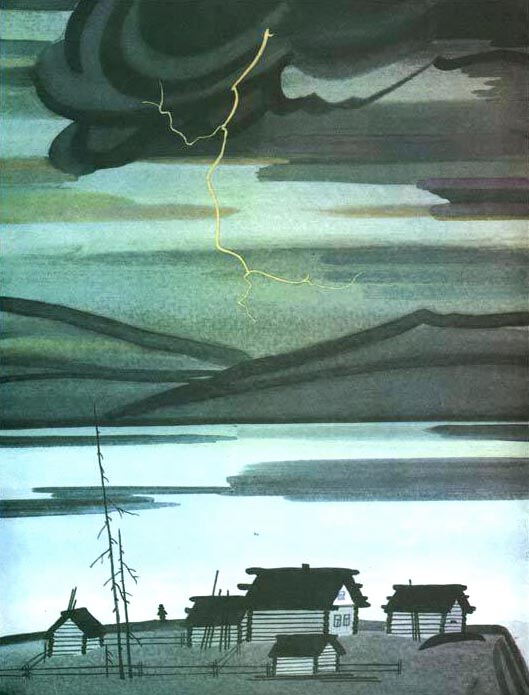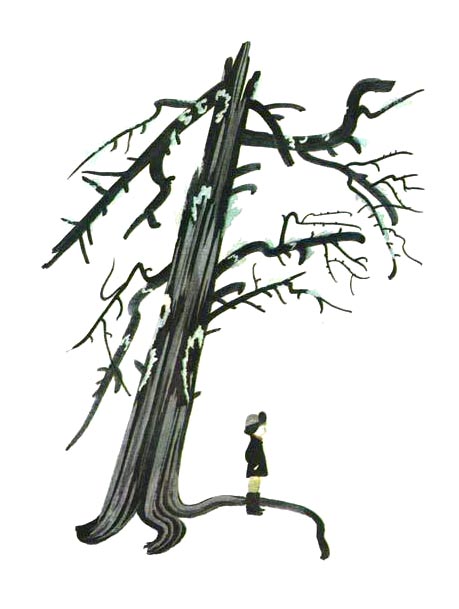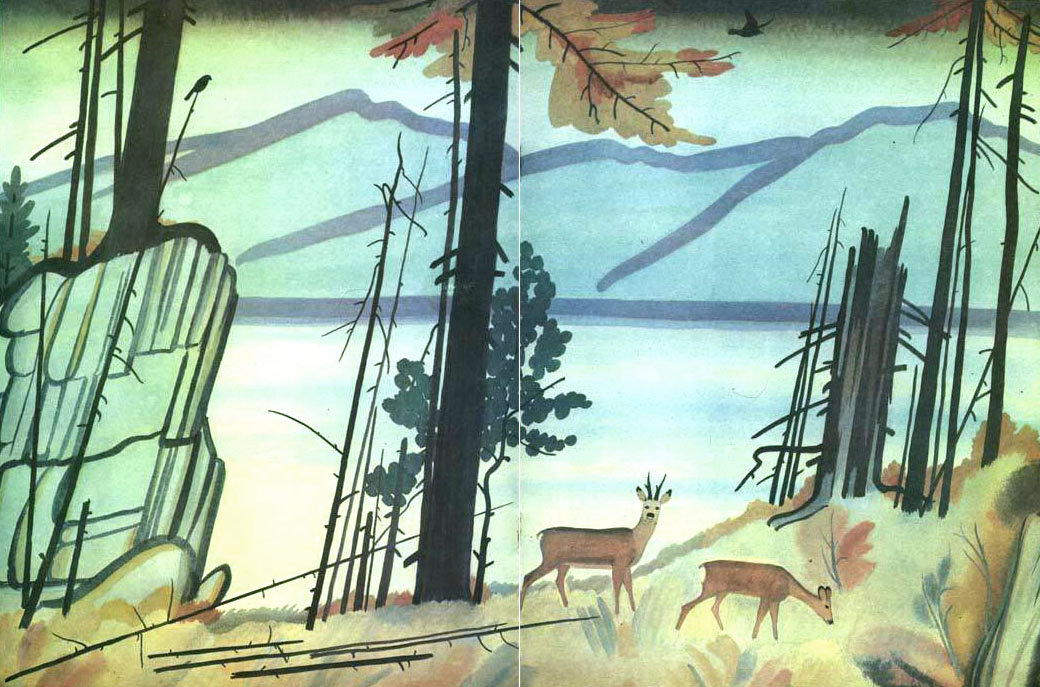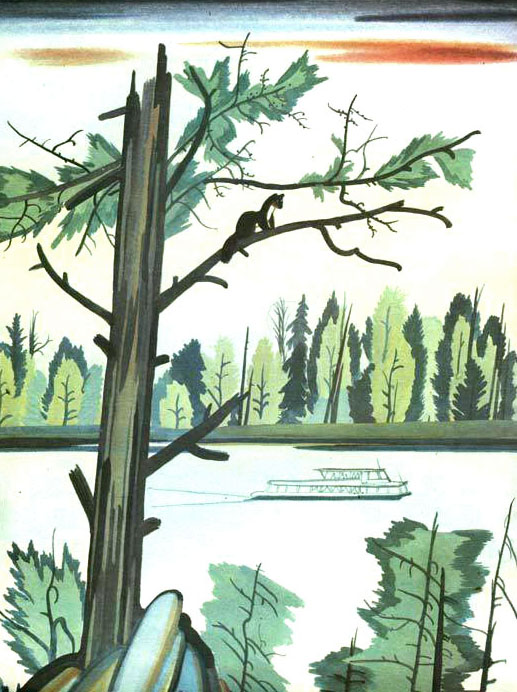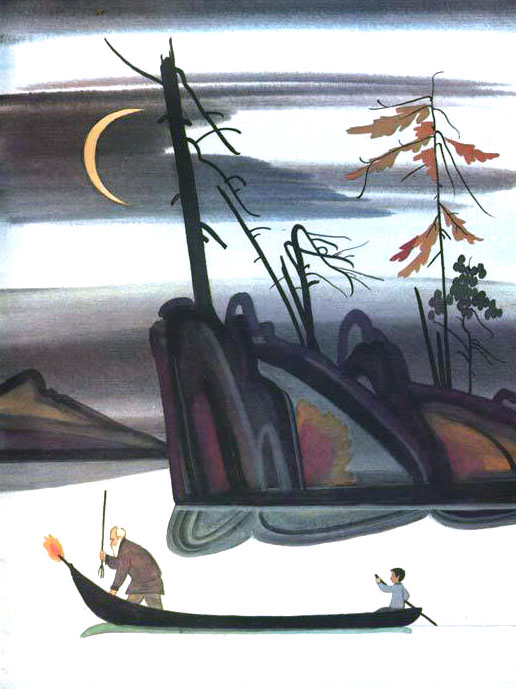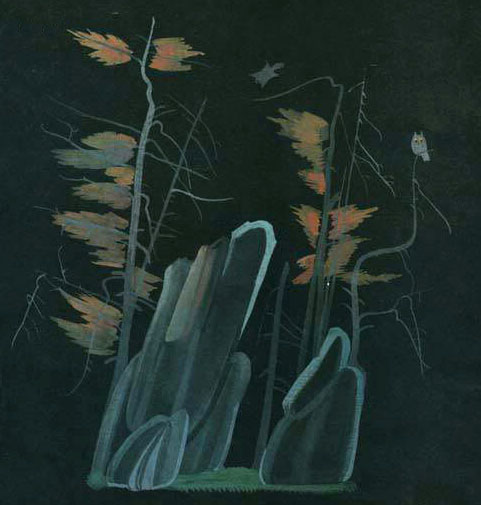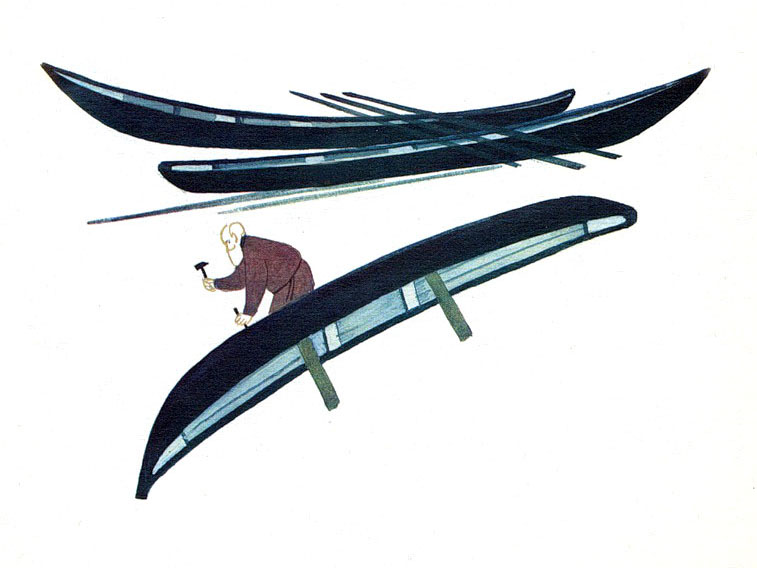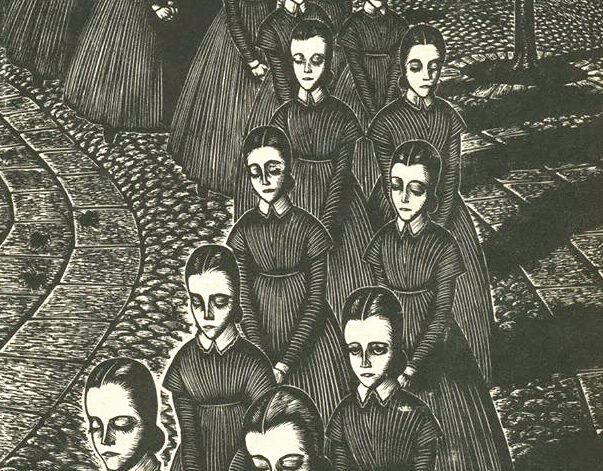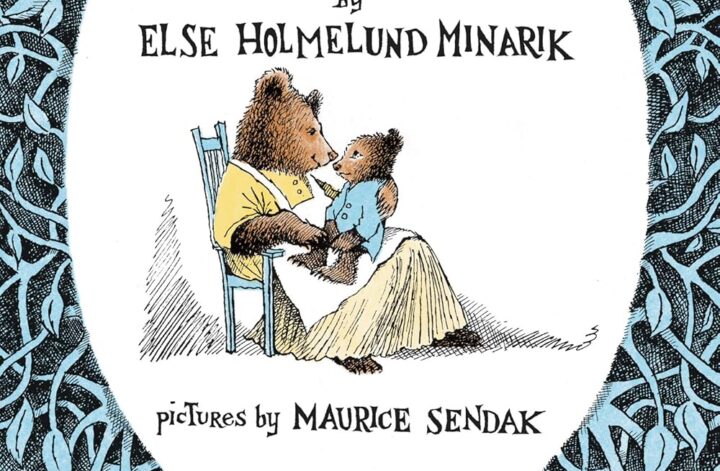Author: Valentin Rasputin
Illustrator: Pyotr Bagin
Year: 1983
Publisher: Malysh

Original title: На реке Ангаре
In Valentin Rasputin’s book, the Angara is the embodiment of untamed nature — powerful and willful, both menacing and beautiful, like an ancient goddess. For the young protagonist, the river is alive: “It stirred restlessly, heaving and sighing. At times a deep, hollow murmur rose from within, followed by a sharp crack like a gunshot, and the ice lit up with branching fissures.”
When a storm breaks, some “external commanding force” draws the boy outside to witness the terrifying and magnificent spectacle unfolding before him. He is swept into the vortex of the elements, feeling himself a part of something vast and real — frightening, yet strangely uplifting.
Bagin’s illustrations reflect this sense of awe. Wooden houses appear small and fragile beside the wide current; cliffs hang over them, and the village is enclosed by a tall pine forest. In his world, man is not the master of nature but a tiny creature within it — and only children and the elderly are truly able to feel this. Few notice how the taiga hums with life, how the spring clouds rustle, how young grass looks like fur.
Against the soft watercolor flow of river and sky, Bagin outlines the contours of pines and stones, the fleeting silhouettes of birds darting between branches. It feels as if one is seeing the river through a bird’s eyes — peering out from the forest, then soaring above the stormy Angara.
